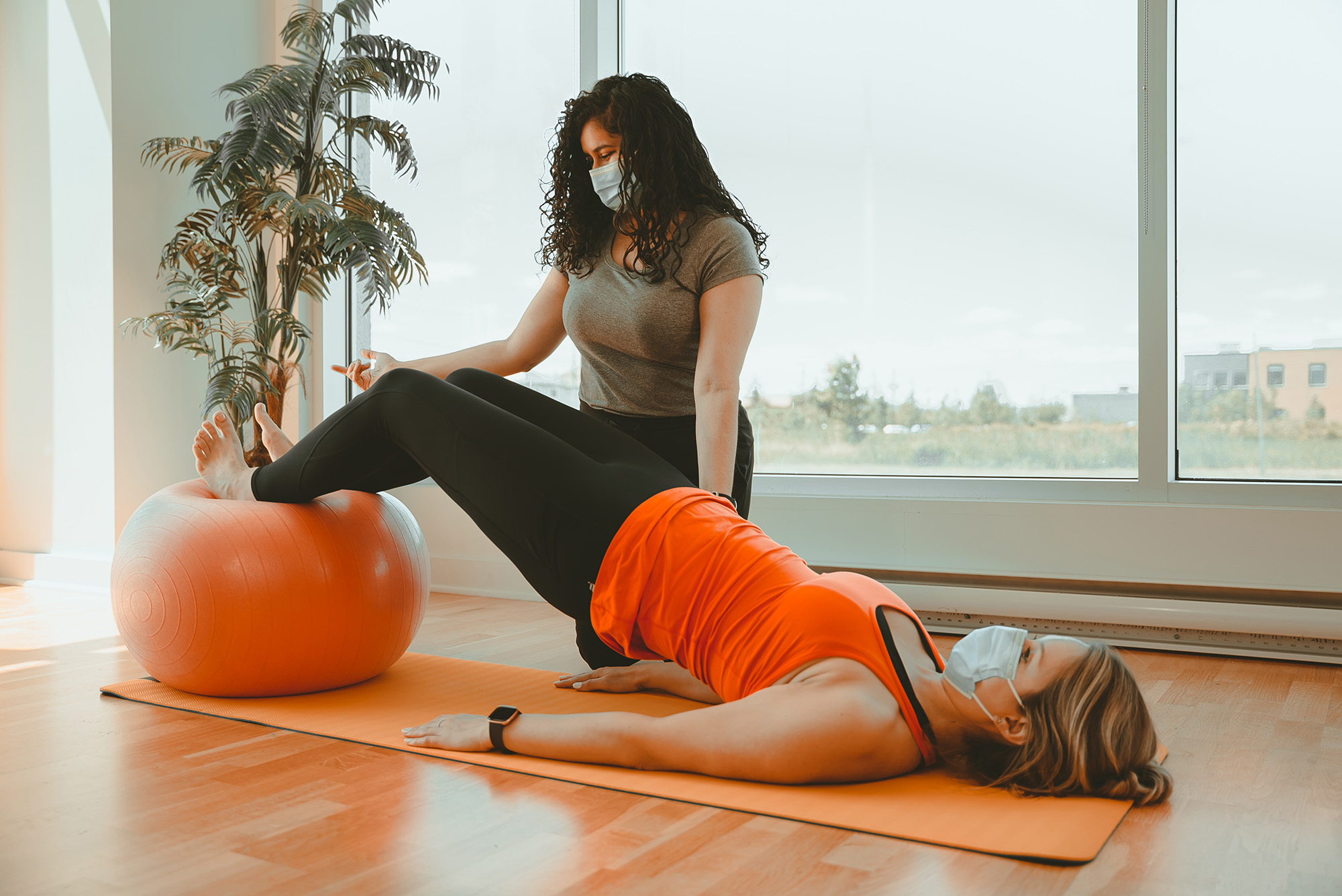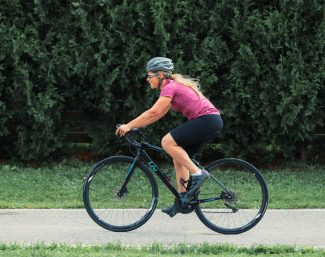
With the reopening of the gyms, here are 3 tips from our kinesiologist to make your return to training more effective!
Tip #1 – Tempo
During your first workouts back at the gym, it is not a wise choice to attempt new records and to work with very intensive loads, i.e. more than 80% of your maximum loads. In order to get a stimulus, we suggest that you implement a tempo during your exercises. The tempo allows you to learn to better control the movement and to master the technique. This better control also allows you to better understand the positions of the body in space. In terms of building muscle mass, a greater tempo under tension allows you to recruit more muscle fibers. In the case of fitness, the use of low loads with tempo will allow you to exploit more your muscular and cardiovascular capacity.
Here’s how to read the tempo and use it:
Example of a tempo with an eccentric phase and a pause during the squat: 3211
The first number represents the eccentric phase, the part of the movement during which we fight against gravity. In the case of this squat, it is the descent, for 3 seconds.
The second number is the static period that can follow the eccentric phase. In the example proposed here, it is a 2 second pause in the bottom of the squat.
The third number represents the concentric phase, i.e. the return to the position by a targeted muscle contraction. For this squat, it is the ascent to the standing position.
The fourth number represents the possible static period at the initial position. In our example, we maintain for 1 second before starting the movement again.
Tip #2 – Range of Motion
This second tip follows on from the first. If we take the time to properly control a movement, it is easier to perform it through a full range of motion. Unless restricted by a health professional, completing a movement through a full range of motion increases flexibility, muscle strength at specific angles, more complete muscle fiber recruitment, greater time under tension, and ultimately, greater energy expenditure.
Range of motion can also be used to vary your workout. Here is a tip to increase your time under tension! The quarter-rep bench press method. This consists of performing a full repetition with a quarter repetition following the eccentric phase. So, lower the bar to your chest in control, then raise it about a quarter of the distance. Lower back down to the chest and then back up to the top!
Tip #3 – Unilateral work
After the gyms close, if you more or less took a break from training, unilateral training is just what you need to get back! Even if you have continued to train, the benefits of this workout are multiple, and we highly recommend it! Here are some of the benefits:
- By using only one side at a time, the core stabilizing muscles are immediately activated to maintain balance. These muscles (transverse, internal obliques, multifidus, paraspinals) stabilize the core in more complex movements and can help in the prevention of injuries and muscle imbalances.
- Whether it is with an upper or lower limb, unilateral work also strengthens the stabilizing muscles of the limb being exercised. For example, it can be a squat on one leg for the stabilizing muscles of the foot and hip muscles of the rotator cuff during a one-armed bench press.
- Whether it is due to an injury or simply the use of the dominant side, unilateral training allows you to work on recreating a balance between a strong side and a weaker side.
- Finally, this type of training promotes better muscle isolation. In a more complex bilateral movement, there are often several muscle groups used to different degrees. In contrast, with unilateral training, one can focus more specifically on one muscle group. Again, this maximizes the time under tension.
If you wish to integrate these techniques in your program and reach your goals, come meet our kinesiologist for a complete and adapted program!





